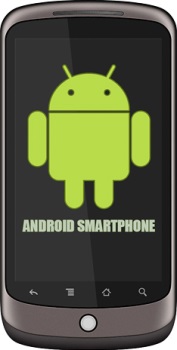
The beginning of the Android operating system is directly related to the company Android Inc., which was founded by Andy Rubinera, Nick Sears and Chris White in October 2003 in the city of Palo Alto, California. Initially, the company developed technology fully independent from other companies and had their projects in absolute secrecy. Among its main objectives was the development of an advanced operating system for digital cameras.
Later, they realized that the market for such devices was not big enough, so the team shifted their efforts to produce an operating system for smart phones, thus rivaling other systems category, such as Symbian, developed by Nokia and Windows Mobile. However, the lack of investments precluded the smooth progress of the project.
Two years later, on August 17, 2005, Google bought the company and put all Android development team, led by Andy Rubinera, which became part of the body of members of the company, to work on a mobile platform based on Linux.
The first steps culminated in November 5, 2007, at the launch of the project entitled Android, whose goal was to develop a system for mobile devices under the open standard (standard that is publicly available and has various rights to use associated, and may also have various properties of how it was designed) and built on the Linux kernel version 2.6.
The Android project is connected to the Open Handset Alliance, which is a consortium of technology companies consisting of companies like Google, Sony, Samsung, telephone operators and device manufacturers.
The first device with Android system, the HTC Dream, was released on October 22, 2008 in the United States. [HTC (High Tech Computer Corporation), is a Taiwanese manufacturer of smartphones and tablets]. Currently the system is at version 4.3 and according to the company Google has 75% of the smart phone market.
• In total, more than 500 million sets and more than 600 different devices are using the system. According to Google, the Android system gains no less than one million new users every day.
To baptize each version, the company decided to give names of desserts. In April 2009, version 1.5 - or "Cupcake" - introduced auto- correction in the text and also the famous "widgets", which are still one of the best system functions.
Then, version 1.6 "Donut" brought automatic online search from the device homepage. Also in 2009, version 2.0 "Eclair" allowed the use of multiple Google accounts in one device, which facilitated the sync emails and contacts.
In 2010, version 2.2 "Frodo", the big news was the possibility of transforming the device into an access point via WI - fi using the 3G network. Also, a big step in this phase was the introduction of Flash (plug-in browser across platforms offering advanced features on the Web) in the browser, which clashed with its main competitor, the iPhone.
In late 2010, version 2.3 "Gingerbread" first brought support for voice over IP, VOIP technology, which allows the use of applications for voice calls like Skype, for example. In 2011, with Android 3.0 Honeycomb, it became possible to use the system on larger screens with better graphics and a system of completely redesigned notifications bar.
On December 16, 2011, the Android 4.0 "Ice Cream Sandwich" reshaped the entire interface of the most widely used platform in the world. The main innovation was the creation of folders on the device home screen. Also, from this release it is now possible to choose which applications should start functioning as soon as the smart phone is turned on.
In July 2012, version 4.1 "Jelly Bean" included new internal elements and new research. And the 4.2 update was on account of safety. This is a vulnerable point of Android. Over the years, several flaws and vulnerabilities have been found in the platform, and it is now a target for many viruses and malware.
The update, 4.3, brought the multiple users with different usage restrictions for each and the latest update Android 4.4 "KitKat" takes system performance to an all-time high by optimizing memory and improving your touch screen so that it responds faster and more accurately than ever before. The next version 5.0 - "Lollipop" - was released in 2014.
[In October, 2015 Google released Android 6.0 - "Marshmallow". It further improved performance and extended battery life. As a result most of the changes are hidden under the surface.]
Shah Ali Sah is a local magazine writer about internet related subjects and a web developer. [Sorry, the website mobile4price.com cannot be found]
More Windows Administration Information:
• What is Bash?
• Levels and Layers of Abstraction in a Linux System
• Installing Software on Fedora
• Configuration of Conky System Monitor for Linux
• Tips for top: Monitoring CPU load on Linux
• CFS: Completely Fair Process Scheduling in Linux
• Linux su vs sudo: What's the Difference?
• How to Dual Boot Windows XP and Ubuntu 8
• Check Used Disk Space on Linux With du Command
• You Can Switch to Linux!
